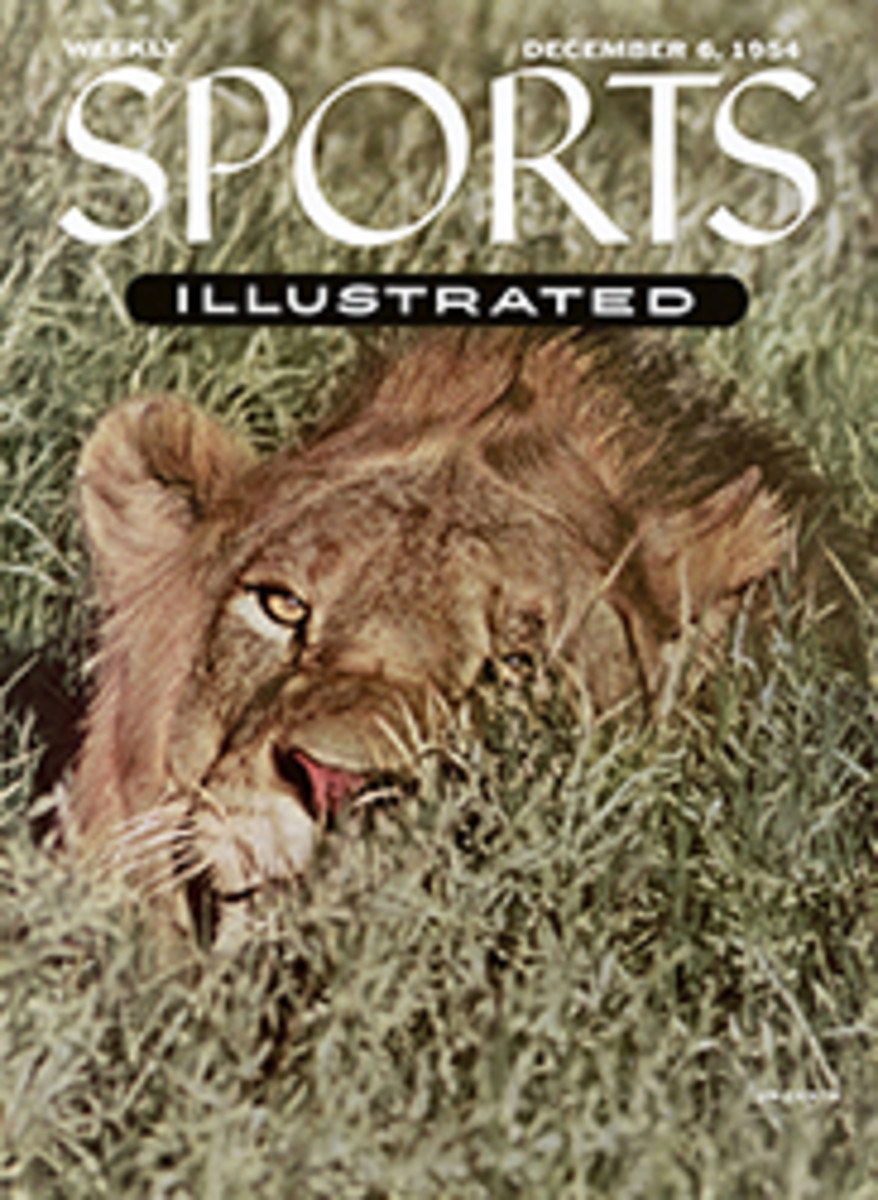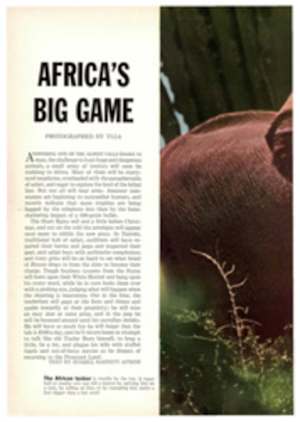
AFRICA'S BIG GAME
Answering one of the oldest calls known to man, the challenge to hunt huge and dangerous animals, a small army of tourists will soon be trekking to Africa. Most of them will be starry-eyed neophytes, overloaded with the paraphernalia of safari, and eager to explore the land of the lethal lion. But not all will bear arms. Amateur cameramen are beginning to outnumber hunters, and records indicate that more trophies are being bagged by the telephoto lens than by the bone-shattering impact of a 500-grain bullet.
The Short Rains will end a little before Christmas, and out on the veld the antelopes will appear once more to nibble the new grass. In Nairobi, traditional hub of safari, outfitters will have repaired their lorries and jeeps and inspected their gear, and safari boys with anthracite complexions and ivory grins will be on hand to see what breed of Bwana drops in from the skies to become their charge. Tough business tycoons from the States will fawn upon their White Hunter and hang upon his every word, while he in turn looks them over with a probing eye, judging what will happen when the shooting is inaccurate. Out in the blue, the tenderfoot will gape at the lions and rhinos and quake inwardly at their proximity; he will miss an easy shot at some prize, and in the jeep he will be bounced around until his sacroiliac shrieks. He will have so much fun he will forget that' the tab is $100 a day, and he'll return home in triumph to talk like old Trader Horn himself, to brag a little, lie a lot, and plague his wife with stuffed heads and out-of-focus movies as he dreams of returning to the Promised Land.
The African tusker is trouble by the ton. A rogue bull or cranky cow can kill a hunter by spitting him on a tusk, by rolling on him, or by trampling him under a foot bigger than a bar stool.
The mighty lion has been a top trophy since the seventh century B.C. when Assurbanipal immortalized his image on the palace walls at Nineveh. Due to their thornbush habitat, few males ever attain full manes, and blackmaned specimens are rare. The lioness does most of the killing for food and has been known to attack hunters. It is then that the White Hunter earns his pay as the safari's "insurance."
Elephants trek early in the morning and late in the afternoon to the nearest water to drink and bathe. On the way they often push over big trees to get at the tenderest top leaves, their favorite food. In the noonday sun they like to snooze in the shade of an acacia tree, resting their heavy trunks on limbs.
The rhino's hide is not as thick as is popularly supposed and one of the reasons why he wallows in mud is to acquire a protective layer against tick-birds. They tear flesh from open sores found on many rhinos. These animals are nearsighted and their "horns" are agglutinated hair, attached to the skin but not to the skull.
The zebra's Skin, prized by Paris decorators early in the modern-interior craze, put this striped relative of the horse family on most safari want lists. Favorite food of the lion, the zebra has a mean disposition, is addicted to kicking and biting, and loves to roll around in the dust.
The tallest animal is the giraffe, emblem of Tanganyika. Semimute and easily killed, he is not considered a sporting trophy and White Hunters have scant respect for a client who insists on shooting one. Rutting bulls fight each other by using their huge heads like battle-axes.
The Sleepy hippos of Mtito Andei are among Kenya colony's most amusing sights. Halfway between Nairobi and Mombasa, in a game reserve, lies a crystal-clear pool of soda water, home of a dozen or more drowsy hippos, who rest on the bottom and in rotation rise rhythmically to the surface. They can stay under for a maximum of approximately six minutes, and like to use each other as pillows when submerged. The hippopotamus is rarely killed by sportsmen, although he was once persecuted almost to extinction for his big ivory teeth and tough, lard-fat hide.
Jumping Stars of Africa are the impallas, who can make leaps 12 feet high and 30 feet long while in the heavy grass. They do this to see if lion or leopard lurks ahead. Their aerial antics are poetry in motion. The big trophy bucks bear handsome black lyrate horns which measure up to 30 inches.
Scavengers of the bush are the vultures, capable of stripping an antelope to bare bones in less than 30 minutes. Endowed with incredible vision, they hover far out of sight and glide down in greedy multitudes within seconds after a shot is made. The sight of vultures clustered in a tree indicates that there is probably a lion on a kill near by.
NINE PHOTOS
YLLA

